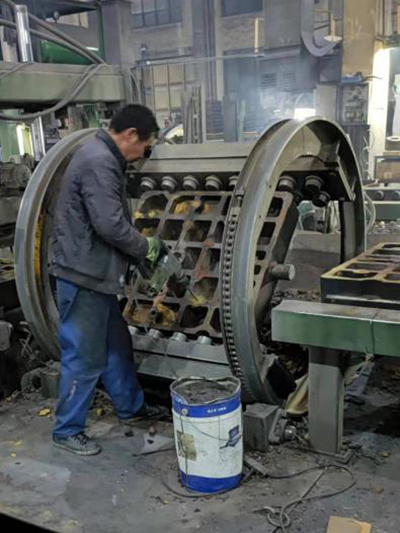Sand Castings A Versatile Manufacturing Process
Sand casting, also known as sand mold casting, is a widely utilized manufacturing process that has been around for thousands of years. This technique involves the creation of metal parts by pouring molten metal into a sand mold, which is specifically designed to shape the desired final product. It is renowned for its versatility, cost-effectiveness, and ability to produce complex geometries, making it a popular choice across various industries.
Sand Castings A Versatile Manufacturing Process
Once the pattern is placed in a mold box filled with sand, the sand is packed tightly around it. After removing the pattern, the two halves of the mold are assembled, ensuring that they fit snugly together. This assembly also includes the addition of gating systems, which are channels through which the molten metal flows into the cavity of the mold. After the mold is prepared, molten metal—commonly aluminum, iron, or bronze—is poured in, filling the cavity created by the pattern.
sand castings

One of the significant advantages of sand casting is its adaptability to produce large and small parts alike. It can handle a range of weights, from just a few grams to several tons. This makes it an ideal process for manufacturing components for heavy machinery, automotive parts, and even intricate sculptures. Moreover, sand casting is not limited to a specific metal, providing manufacturers the flexibility to choose materials based on mechanical properties and cost considerations.
Another noteworthy benefit is the relatively low cost of production, especially for smaller runs compared to other casting techniques such as die casting. Since patterns are often used multiple times, the initial investment can be diluted over numerous production cycles. Additionally, sand molds can be easily modified, allowing for quick adjustments when design changes are needed.
However, sand casting is not without its challenges. The process can lead to surface roughness and dimpling, requiring additional finishing processes to achieve a smooth surface. Moreover, tolerance levels may not be as precise as those achieved through other methods, which can be a critical factor for specific applications.
In conclusion, sand casting remains a vital manufacturing process due to its versatility, cost-effectiveness, and ability to produce complex shapes. With ongoing advancements in technology and material science, the sand casting process continues to evolve, promising enhanced capabilities for future applications in various sectors, including aerospace, automotive, and art. Its timeless nature and flexibility ensure that it will remain relevant in the vast landscape of manufacturing for years to come.
Post time:ئۆكتەبىر . 30, 2024 18:53
Next:foundry sand reuse
